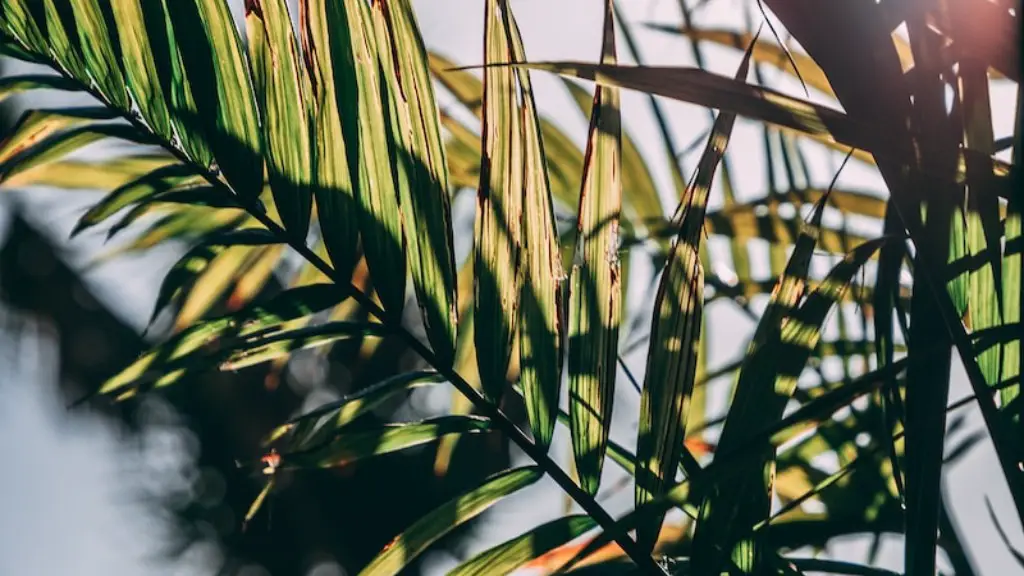Avocados are one of the most popular fruits in the world and are renowned for their creamy texture and abundance of healthy fats, vitamins, minerals, fiber, and other plant-based nutrients, making them a wonderful addition to any diet. But how tall can an avocado tree grow?
An avocado tree can grow up to 65 feet tall when given the right conditions. The maximum height of an avocado tree depends on the size of the container the tree is in, how much fertilizer is added, and the overall care of the tree. Avocado trees are usually planted in containers, which can limit the tree’s final height. However, given the right conditions and enough room to grow, a tree can reach heights of up to 65 feet.
The trunk and branches of the avocado tree can reach up to 8 inches in diameter, and the canopy can stay dense and full of foliage. The leaves of the tree are glossy and oval-shaped, with a pointed tip. The flowers of the avocado tree are small and white, and the tree produces green-colored fruit that ripens into the familiar avocados.
Avocado trees need soil that is rich in nutrients and well-drained, and they should be planted in an area with full sun. They also need regular pruning to encourage the development of fruit and remove dead and diseased branches. Additionally, avocado trees require adequate watering at least once a week throughout the growing season.
Trees should be harvested when they are 7 to 10 years old, and the yield will vary depending on the variety of the tree, soil quality, and climate. Some common avocado varieties can produce up to 300 fruits per tree, while other varieties may yield significantly less.
Experts also recommend providing suitable fertilizer for the tree, as it can help promote growth, provide nutrients for the soil, and increase the tree’s yield. The most important factor in ensuring optimal growth and yield of an avocado tree is a commitment to proper care.
Pruning and Maintenance
Pruning an avocado tree is important to promote its growth and improve the health of the tree. Pruning should be done in late summer or early fall, as this is the time when the tree puts the most energy into creating new growth. Pruning the tree allows for more sun to reach the inner branches, which can help encourage more fruit production and prevent disease.
Another important way to maintain an avocado tree is by harvesting the fruit when it is fully ripe. Allowing the fruit to stay on the tree for too long can lead to rot, which can cause severe damage to the tree. Additionally, over-watering the tree can create an environment that is ideal for pests and diseases.
Time and Care
Growing an avocado tree is a lengthy process, as it typically takes up to 10 years for a tree to start producing fruit. Additionally, tending to the tree is an ongoing process, as the tree needs to be watered, fertilized, and pruned in order to reach its full potential. Avocado trees can be planted in containers or in the ground, but they must be given the right amount of sunlight and care in order to reach their full growth potential.
Environment and Fungi
Avocado trees also require a suitable environment in order to thrive. An ideal environment for an avocado tree would be in an area with susceptible air movement and no strong winds. Wind can cause physical damage to the tree and can increase the chances of fungal infections. Additionally, avocado trees should be provided with adequate water and sunlight in order to maintain healthy growth.
Avocado trees can also be susceptible to various fungal diseases. Fungal diseases can damage the tree, resulting in decreased growth and fruit production. Proper pruning and moisture management can help reduce the chances of fungal infections. Additionally, some fungicides may help reduce the impact of fungal diseases on an avocado tree, but it is important to follow the instructions on the label of the product before using it on the tree.
Nutrition and Watering
Avocado trees need adequate nutrition and water throughout the growing season in order to reach their full potential. Nutrients can come from fertilizer, compost, or manure and should be applied at least once a month during the spring and summer months. Additionally, watering the tree regularly is essential, especially during periods of drought.
For optimal growth, avocado trees should be watered deeply but not excessively. Over-watering the tree can cause root rot and can lead to decreased growth and fruit production. Additionally, it is important to provide adequate drainage for the tree, as water can quickly become stagnant and lead to root damage.
Pests, Diseases, and Harvesting
Avocado trees are also susceptible to various pests, diseases, and other issues that can affect their growth and yields. Common pests include citrus mites, grubs, whiteflies, and scale, while fungal and bacterial diseases can also occur if the tree is not properly cared for. Taking steps to prevent pests and diseases and properly caring for the tree can go a long way in reducing the impact of these issues on the tree.
When harvesting, it is important to wait until the fruit is fully ripe before removing it from the tree. Removing the fruit too early can lead to poor flavor and quality, whereas waiting too long can lead to over-ripeness and rot. Additionally, ripe fruit should be handled carefully to avoid bruising or damaging the fruit.
Conclusion
Avocado trees are a wonderful addition to any landscape. If given the right conditions and proper care, an avocado tree can reach heights of up to 65 feet and yield hundreds of fruits per season. In order to ensure optimal growth and yields, it is important to provide adequate nutrition, water, and care, as well as take measures to prevent pests and diseases.



